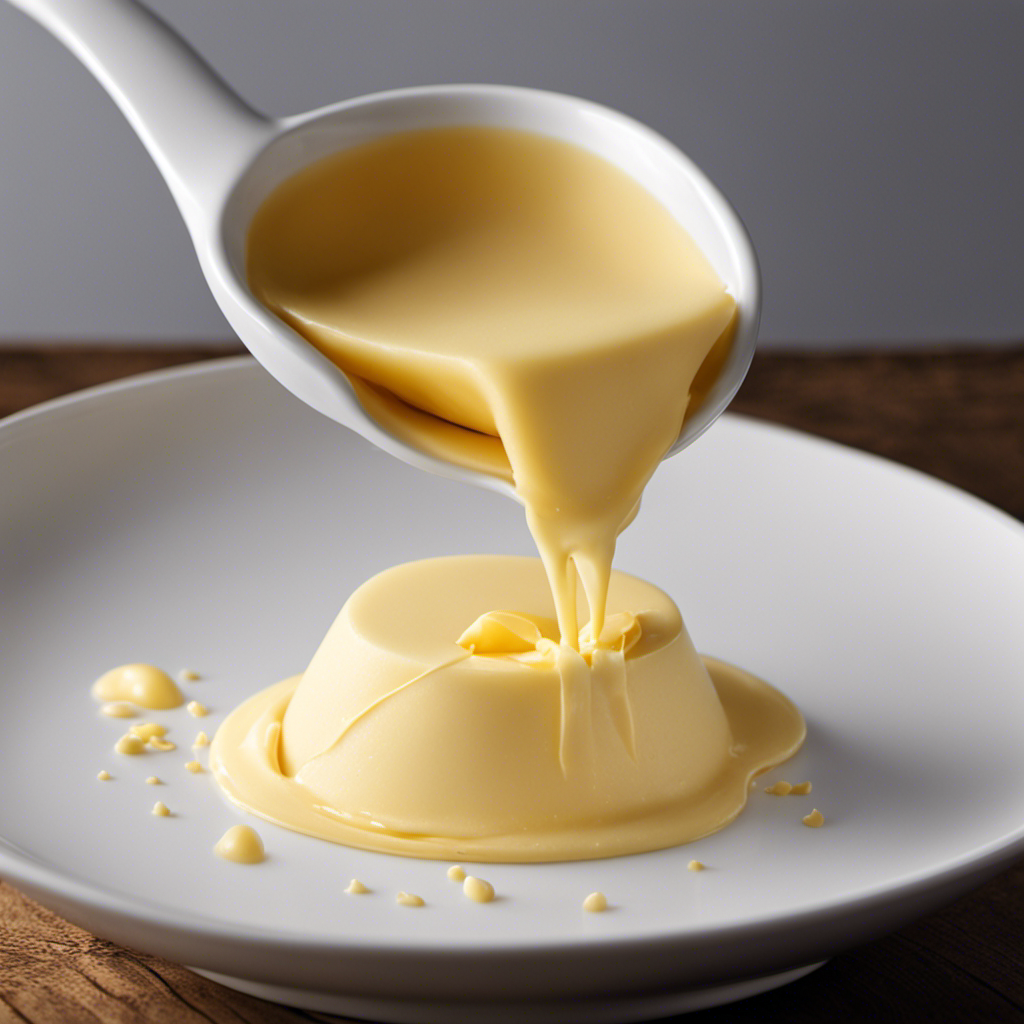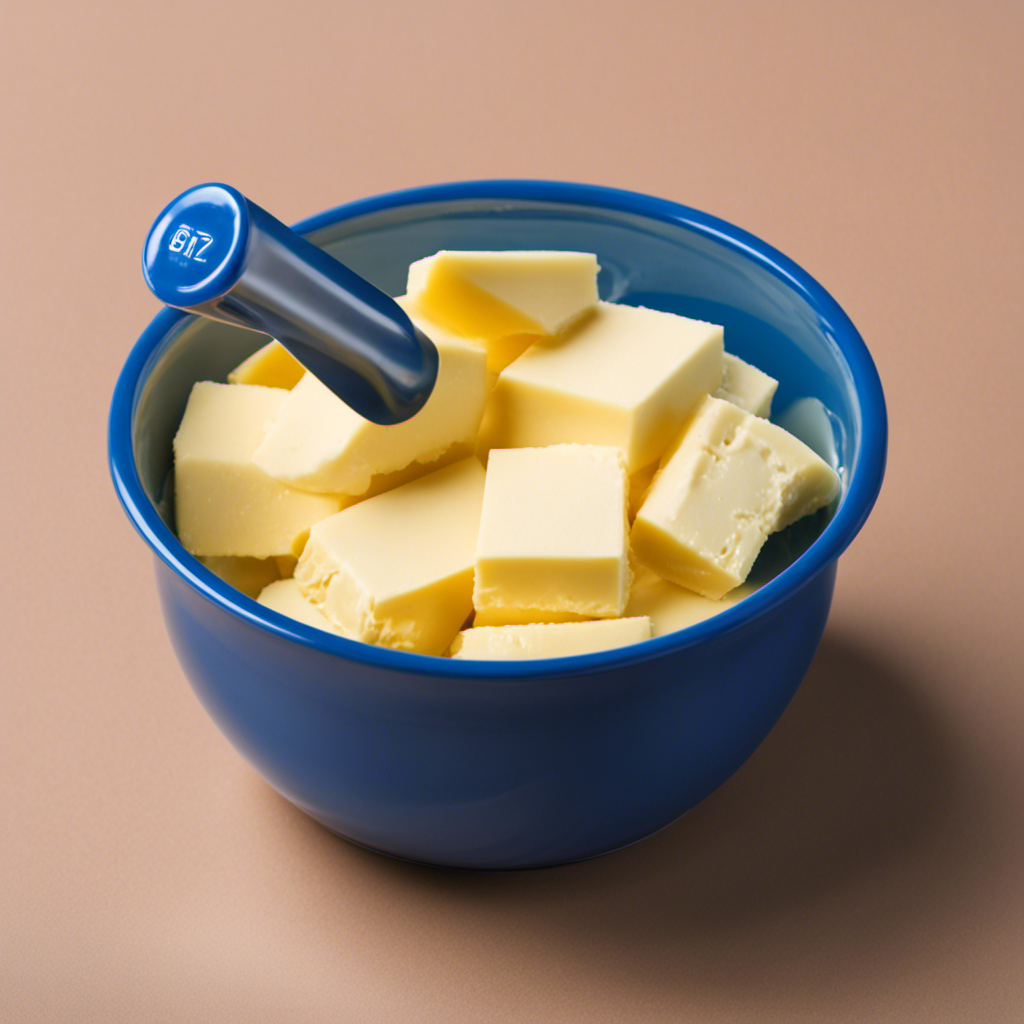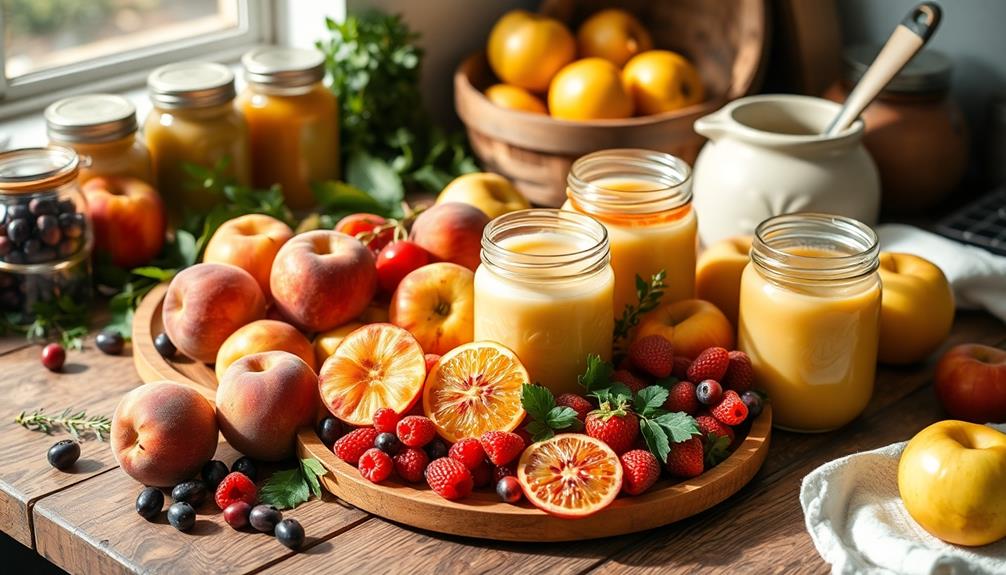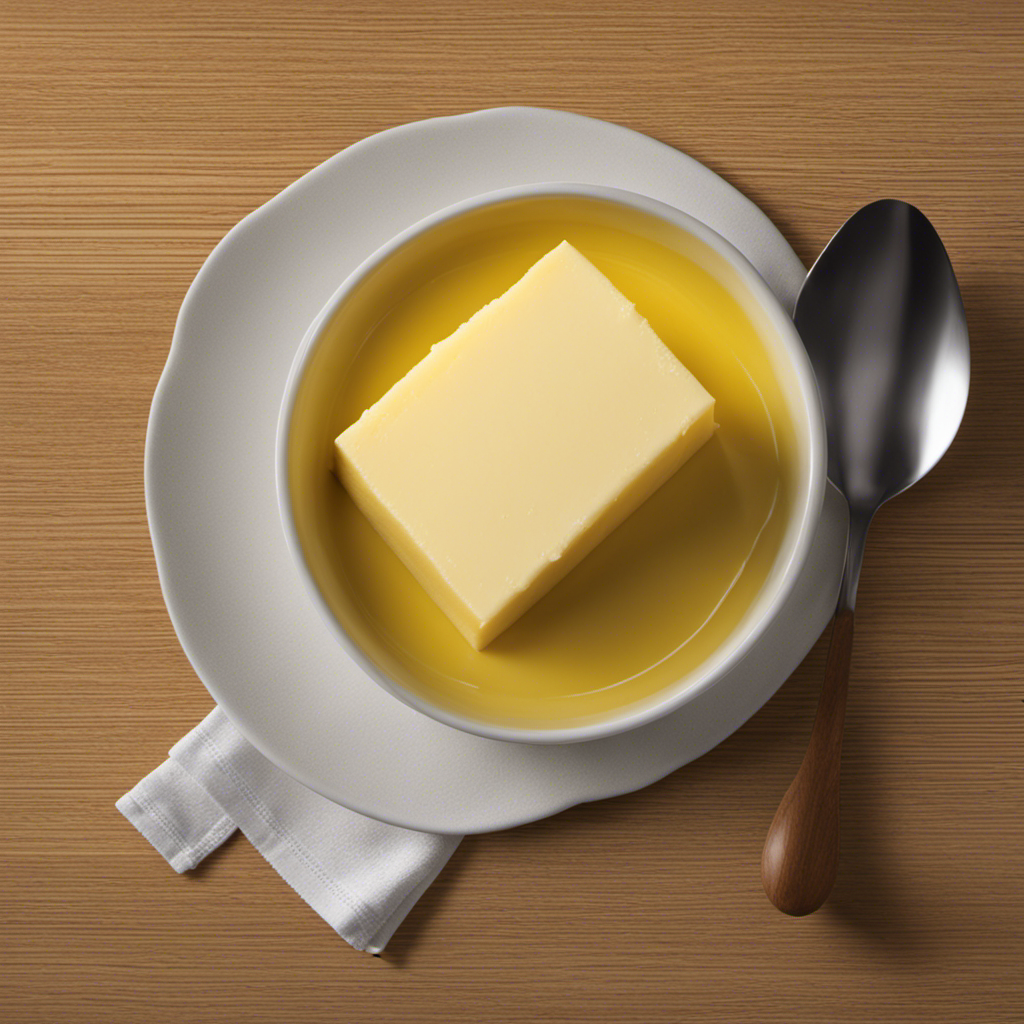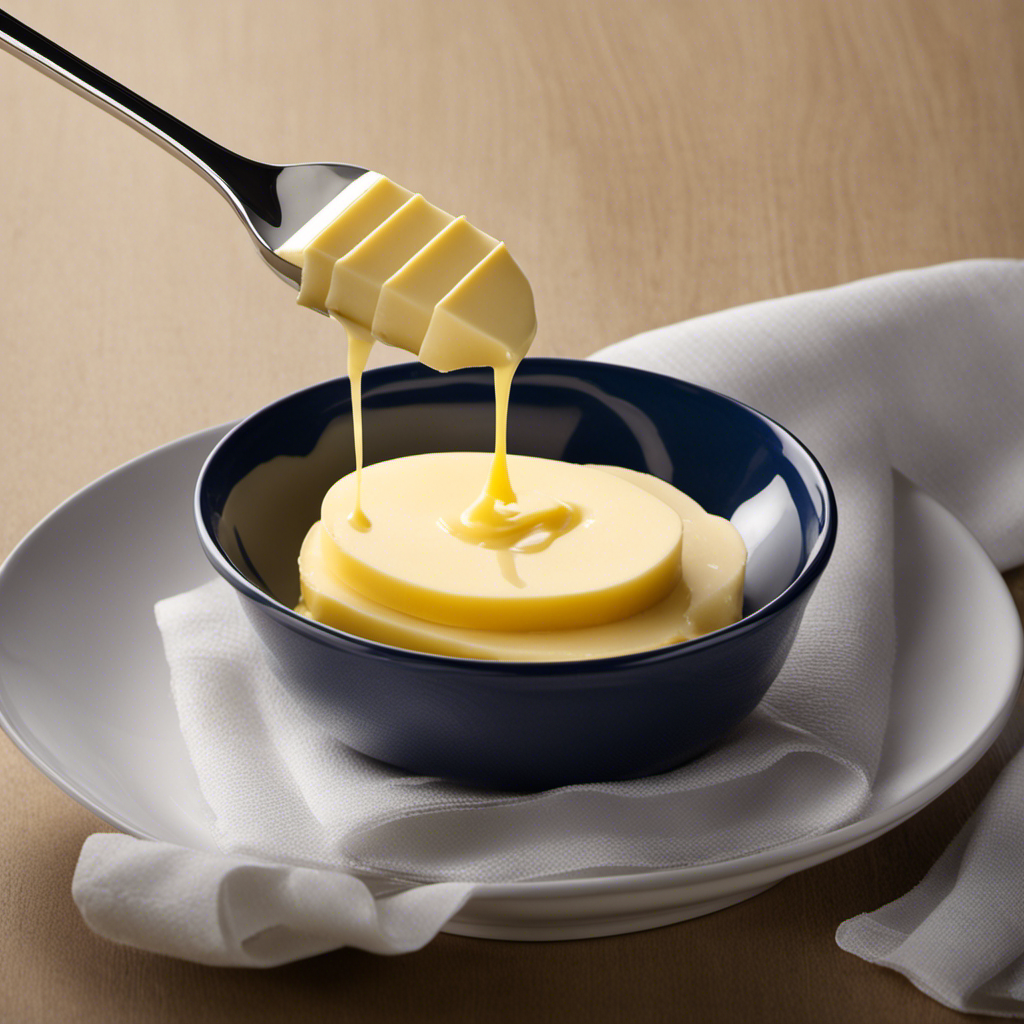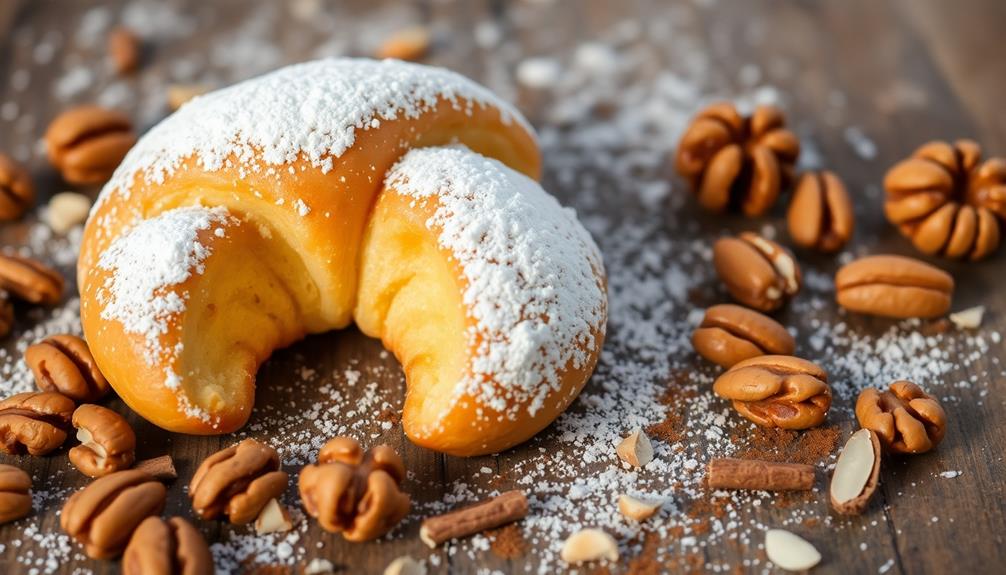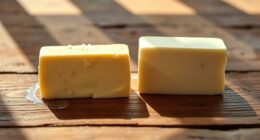Fed up with trying to figure out the right amount of butter for your cooking? Search no more! This article is here to solve the hotly debated issue: ‘How many grams is 1 tablespoon of butter?’
We understand your frustration when measurements aren’t clear-cut. That’s why we’re here to provide you with precise conversions and accurate information. Say goodbye to imprecise measurements and hello to culinary confidence.
Let’s dive in and discover the weight of 1 tablespoon of butter in grams.
Key Takeaways
- Butter to grams conversion factor is 14 grams per tablespoon.
- Consistency in butter measurements is important for accurate results.
- Adjusting butter measurements is easy using the conversion factor.
- Grams are a more precise and internationally recognized unit of measurement for cooking and baking.
The Conversion Factor: Butter to Grams
To convert butter to grams, you’ll need to know the conversion factor.
Butter measurement conversions can be tricky, but understanding the ratio between grams and tablespoons will make it easier for you.
The conversion factor for butter is 14 grams per tablespoon. This means that every tablespoon of butter weighs 14 grams.
So, if you have a recipe that calls for 2 tablespoons of butter, you can easily calculate that it is equivalent to 28 grams.
Likewise, if you need 50 grams of butter, you can divide it by the conversion factor to find that it is approximately 3.57 tablespoons.
Knowing this conversion factor will help you accurately measure butter in grams and ensure your recipes turn out just right.
Understanding Tablespoons and Their Measurements
Understanding how much butter is in 1 tablespoon can be quite helpful in cooking. Here are four key points to consider when it comes to measuring butter accurately and adjusting butter measurements:
-
Consistency matters: Butter can vary in density and moisture content, so it’s essential to use the same brand or type of butter in your recipes for consistent results.
-
Softened vs. melted: When a recipe calls for softened butter, it means butter that is at room temperature. If the butter is melted, it will have a different volume and may affect the texture of your baked goods.
-
Measuring accurately: To measure butter accurately, use a tablespoon or a kitchen scale. If using a tablespoon, ensure that it is level and not heaped. If using a kitchen scale, weigh the butter according to the recipe’s specified amount.
-
Adjusting butter measurements: If you need to adjust the amount of butter in a recipe, remember that 1 tablespoon is equivalent to 14 grams or 1/2 ounce. You can easily scale up or down based on your desired quantity.
The Weight of 1 Tablespoon of Butter
You can easily determine the weight of 1 tablespoon of butter by using a kitchen scale. Butter has a density of approximately 0.92 grams per milliliter. Since there are 14.79 milliliters in 1 tablespoon, you can calculate the weight by multiplying the volume of butter by its density.
This means that 1 tablespoon of butter weighs approximately 13.57 grams.
If you need to convert tablespoons to cups, keep in mind that there are 16 tablespoons in 1 cup. So, if you want to know how many grams are in a cup of butter, you would multiply the weight of 1 tablespoon (13.57 grams) by 16, which equals 217.12 grams.
Using a kitchen scale and understanding the density of butter can help you accurately measure ingredients for your recipes.
Grams Vs. Ounces: Which Measurement Is More Accurate
When comparing accuracy, grams are generally considered to be more precise than ounces. Here’s why:
-
Decimal-based system: Grams are part of the metric system, which is based on powers of 10. This makes conversions between units much easier and more accurate.
-
Consistency: Grams provide a consistent measurement across different ingredients, whereas ounces can vary depending on the density of the substance being measured.
-
International standard: Grams are widely used around the world as the standard unit of measurement in cooking and baking, making it easier to follow recipes from different regions.
-
Precision: Grams allow for more precise measurements due to their smaller increments, which can be crucial when it comes to achieving the desired outcome in a recipe.
With grams being the more accurate and precise measurement, it is important to understand how to convert butter measurements for precision and accuracy.
Converting Butter Measurements for Precision and Accuracy
To convert butter measurements accurately, it’s important to know the conversion ratios between ounces and grams. This knowledge will enable you to follow butter recipes precisely and achieve the desired results in your cooking and baking endeavors. Here is a helpful table that shows the conversion ratios for commonly used butter measurements:
| Butter Measurement | Ounces | Grams |
|---|---|---|
| 1 tablespoon | 0.5 | 14.18 |
| 1/4 cup | 2 | 56.7 |
| 1/2 cup | 4 | 113.4 |
| 1 cup | 8 | 226.8 |
Conclusion
In conclusion, it is essential to know the weight of 1 tablespoon of butter in grams for precise cooking measurements.
Understanding the conversion factor and the difference between grams and ounces is crucial to ensure accurate recipes.
For example, if you’re making chocolate chip cookies and the recipe requires 2 tablespoons of butter, knowing that 1 tablespoon is approximately 14 grams allows you to calculate that you’ll need around 28 grams of butter.
This level of precision can greatly impact the outcome of your culinary creations.
